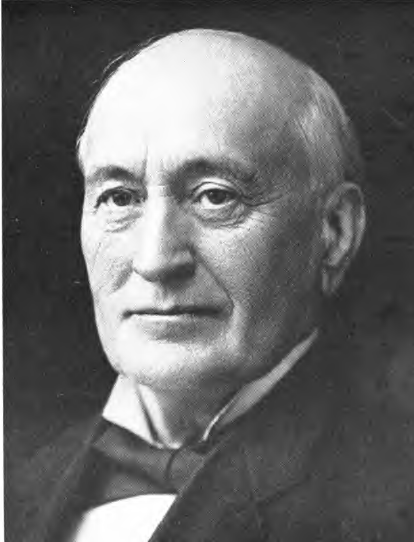
The first (original) Church of the Nazarene in Los Angeles, the Glory Barn, built in 1898.
-

Phineas F. Bresee
In the earliest days of that first “Church of the Nazarene” in Los Angeles, California, compassion was the fire driven by holy hearts and passionate engagement with the community. The minutes of an early meeting declared that the church was called to minister to “the neglected quarters of the city,” where poverty, addiction, brokenness, and despair were atmospheric. The church felt that the message of holiness demanded engagement, not distance. Homes for unwed mothers, orphanages, fierce and determined opposition to the prevalence of saloons and bars, drew those early Nazarenes into very open and vocal advocacy for the victims of alcoholism, drug use, and prostitution. Racial and social outcasts were the objectives of their endeavors.
It was that very passion that led Phineas Bresee out of the comfortable and prestigious pulpit at Los Angeles First Methodist Church. He was determined to engage the brokenness and squalor of “Skid Row” and seek to redeem those who were shunned by the more affluent members of many established churches.
-

The Name
These early believers felt that the term "Nazarene" embodied Jesus Christ's simple lifestyle and service to the poor. They rejected ornate, elegant houses of worship as reflecting the spirit of the world. Instead, they felt their money was better spent on saving souls and providing relief for the needy.
In those early years, the Church of the Nazarene spread up and down the West Coast and eastward as far as Illinois.
The Association of Pentecostal Churches of America, The Holiness Church of Christ, and the Church of the Nazarene convened in Chicago in 1907. The result was a merger with a new name: The Pentecostal Church of the Nazarene.
By 1908, called the "year of uniting," several more Holiness Associations joined the Nazarenes. Today, Nazarene Churches claim October 13, 1908, at the Second General Assembly held at Pilot Point, Texas as the denomination's official date of founding.
In 1919, the General Assembly changed the name to the Church of the Nazarene because of new meanings people associated with the term "Pentecostal."
-

Nazarene Compassionate Ministries
Compassion is at the very heart of holiness. John Wesley famously said “There is no holiness without social holiness”.
Compassion is the visible expression of holy love that reaches out in practical, everyday, person-to-person action that authentically expresses its passionate love for Jesus in loving concern for our enemy, our opposite, and “the other” around us.
It crosses boundaries, racial divides, cultural differences, and economic gaps with one motive: Wholehearted love for God and holy sacrificial love for neighbor, whoever and wherever that neighbor may be.
Throughout its history, missionary work has taken a high priority in the Church of the Nazarene. Early work was done in the Cape Verde Islands, India, Japan, South Africa, Asia, Central America, and the Caribbean.
The group expanded into Australia and the South Pacific in 1945, then into continental Europe in 1948. Compassionate ministry and famine relief have been hallmarks of the organization from its beginning.
Education is another key element in the Church of the Nazarene. Today Nazarenes support graduate seminaries in the United States and Philippines; liberal arts schools in the U.S., Africa, and Korea; a junior college in Japan; nursing schools in India and Papua New Guinea; and more than 40 Bible and theological schools throughout the world.
Click on the link below to find out more of what NCM is doing in our world today!


